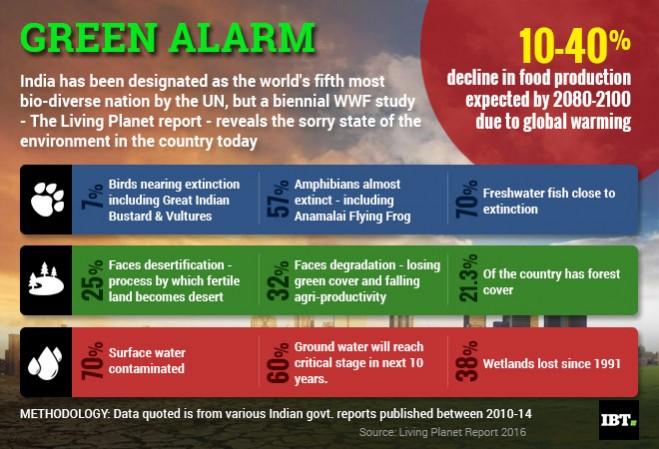The Living Planet Report 2016 has revealed that half of the wildlife in India is in danger of being wiped out completely, while the number of animals living on Earth is likely to witness a two-thirds fall, by 2020.
The report, prepared by the World Wildlife Fund (WWF) and other research institutions, tracked more than 14,000 vertebrate populations of over 3,700 species worldwide and highlighted the fact that India faces pressure on water and land due to unsustainable human activities.
Almost 70 percent of surface water has been polluted while 60 percent of the ground water is likely to reach a critical stage in the next 10 years, the report said. Contamination due to industrial and municipal waste are the main reasons behind wildlife being in danger.
One-fourth of India's land is facing desertification while a third of the land is facing degradation due to the depletion of forest cover.
"We are no longer a small world on a big planet. We are now a big world on a small planet, where we have reached a saturation point," Professor Johan Rockström, executive director of the Stockholm Resilience Centre, said in the foreword for the report.
According to the report, there has been a 58 percent drop in wildlife population between 1970 and 2012 with further drop being predicted at 67 percent by 2020. Destruction of wild habitats, hunting and pollution are the reasons behind the wildlife population being in danger of extinction, according to the data compiled and analysed by researchers from WWF and the Zoological Society of London.
"Population sizes of vertebrate species have, on average, dropped by more than half in little more than 40 years. The data shows an average annual decline of 2% and there is no sign yet that this rate will decrease," the report said.
Wildlife creatures in danger include endangered species such as elephants and gorillas and lesser known creatures such as vultures and salamanders. Wildlife living in mountains, forests, rivers and seas are also in danger.
"The richness and diversity of life on Earth is fundamental to the complex life systems that underpin it. Life supports life itself and we are part of the same equation. Lose biodiversity and the natural world and the life support systems, as we know them today, will collapse," WWF Director General Marco Lambertini said.
We have the tools to fix this problem and we need to start using them now if we are serious about preserving a living planet for our own survival and prosperity," Lambertini added.















